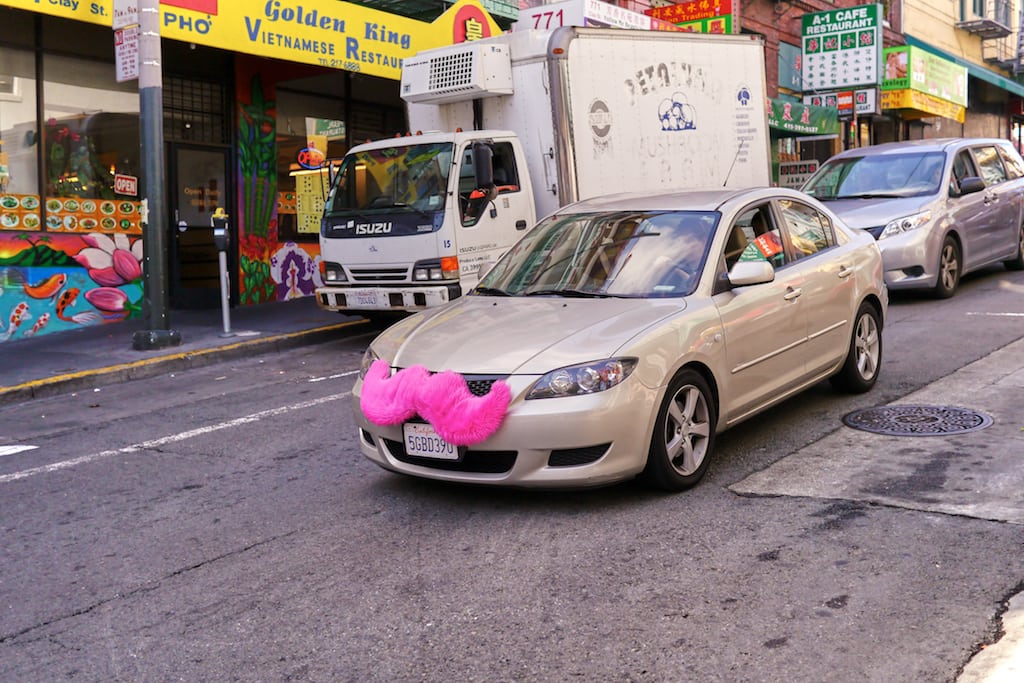The Union Threat to Uber and Lyft's Business Models Is Real

Skift Take
Uber Technologies has overcome taxi driver protests, irate government officials, and the occasional self-made controversy. But the next fight for the ride-hailing company and rival Lyft may be with a modern-day Jimmy Hoffa.
Seattle became the first U.S. city to pass collective bargaining legislation on Monday. Unions pose a new kind of threat to Uber and Lyft's businesses, which connect riders with freelance drivers through a smartphone application. While the companies have been facing legal battles around the U.S. to reclassify drivers as employees and offer benefits, the new Seattle law bypassed that issue in favor of a focus on allowing them to organize into a union, giving drivers more weight in negotiations.
Many roadblocks are still ahead for a possible drivers union, including getting votes from more than half of active drivers, appointing a representative, and overcoming any legal challenges, but if successful, it could have a major impact, according to drivers, economists, and union advocates. Lyft declined to comment, and Uber referred questions to a statement saying drivers appreciate the independence and flexible work hours. Here are five ways unions could affect the ride-hailing industry.
1. Pressure to increase fares
Drivers, naturally, want higher wages. That's a complicated request when Uber and Lyft change prices dynamically based on supply, demand, and other factors. "Higher fares: That's the biggest gripe," said Harry Campbell, an Uber driver in Los Angeles who runs the popular blog called the Rideshare Guy.
To achieve that goal, unions sometimes threaten to instruct members to stop working. That could be especially difficult to pull off with on-demand drivers, who chose those jobs for the flexibility and often can't afford to sacrifice income. "Motivating them all to go on strike for a whole weekend would be the big challenge," Campbell said.
But many drivers complain that their income isn't predictable anyway. Uber and Lyft have lured workers with big incentives or signing bonuses in the past, only to reduce or remove them later. Fares have also come down as the services have matured, said Sasil Teka, who's been driving black cars for Uber since the app was launched in Seattle in 2011. He said things have changed quite a bit since he started. "They were paying us $30 just to sit in the car," said Teka, who's on the board of the App-Based Drivers Association, which is working with Seattle teamsters to form a drivers union. "When they got more cars, they started taking more advantage of the driver."
As an alternative to striking, unions would have the power to force the companies into an arbitration process, according to the law. But increasing prices could end up hurting both the app providers and the drivers. "Higher fares would mean a lower quantity of rides," said Eli Dourado, director of the technology policy program at George Mason University's Mercatus Center. "You could end up with total earnings being less for each individual driver."
2. Hiring city reps to negotiate with the union
Uber outsources much of its communication with drivers. That helps reduce costs, but a union would want a more personal touch. "The best thing that unions can do is provide information to the employer about what they actually value," said Dourado. Expanding and improving driver support could be costly. Nayantara Mehta, senior staff attorney for the National Employment Law Project, said: "All that this law is doing is giving drivers a voice."
3. Tipping and other potential custom features
Beyond fare prices, a common request from drivers is for Uber to add tipping. Lyft allows customers to tip after each ride, something cheered by drivers. While Uber has said that tipping with cash is allowed, most people don't. Dawn Gearhart, a representative of Seattle Teamsters Local 117, said drivers would probably push for tips.
A union might push for other changes to the app. For example, drivers were initially resistant to the app rating system, in which customers grade their experience on a five-star scale. "We tried to fight it, and we couldn't because of the fact that they have no phone number," said Teka.
4. An appeals process
Today, Uber and Lyft can freely remove drivers from its system with little warning. For example, the companies boot those with low ratings. A union would likely pressure them to create an appeals process and to give drivers more warning before banning someone, said Gearhart, from the teamsters group. But such a process could undermine Uber's and Lyft's crowd- sourced rating systems. They may seem a bit cold, but the mechanisms are cheap and efficient. Appeals and human oversight are neither.
5. Rethinking insurance coverage
Uber and Lyft have worked with local governments across the U.S. on auto insurance legislation. Drivers typically must maintain their own insurance for coverage beyond what Uber offers. A union would probably push the ride-hailing companies to expand their insurance plans, reducing the amount that drivers have to pay to insure their cars, said Teka. Any increase in insurance coverage wouldn't come cheaply, either.
This article was written by ERIC NEWCOMER from Bloomberg and was legally licensed through the NewsCred publisher network.
![]()




